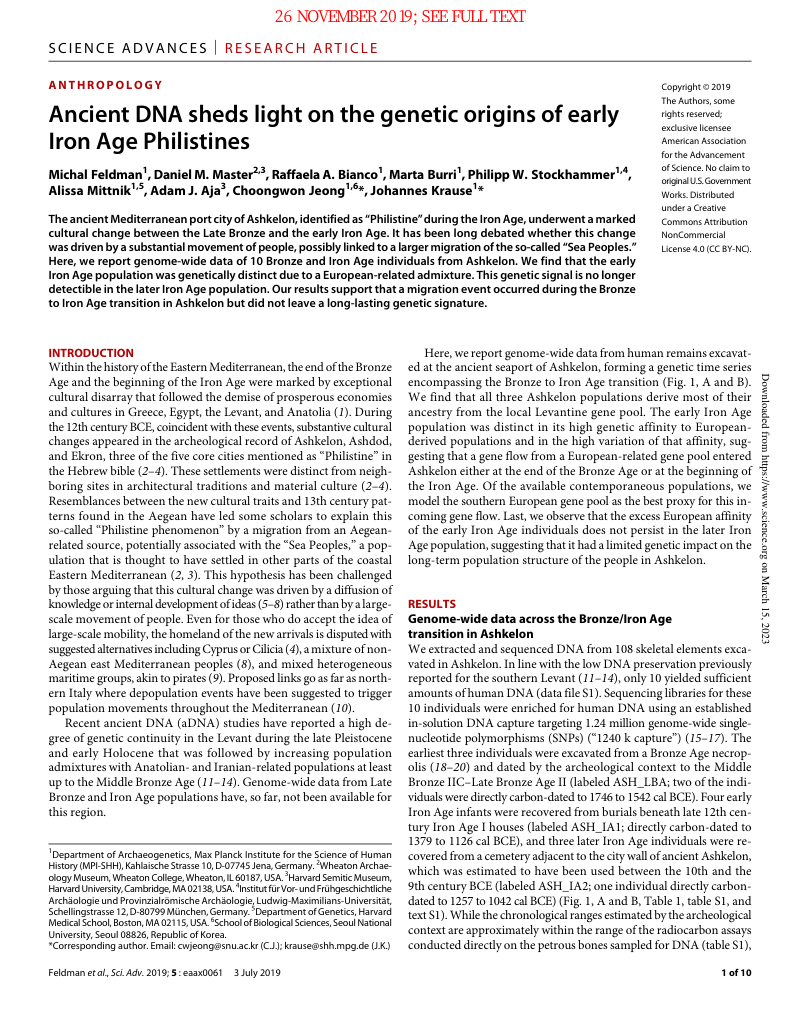Michal Feldman et al. review case of missing Philistine DNA in later population.
- Type
- Academic / Technical Report
- Source
- Michal Feldman et al. Non-LDS
- Hearsay
- DirectSecondary
- Reference
Michal Feldman et al., "Ancient DNA sheds light on the genetic origins of early Iron Age Philistines," Science Advances 5, no. 7 (2019): 1–10
- Scribe/Publisher
- Science Advances
- People
- Michal Feldman et al.
- Audience
- Reading Public
- Transcription
The ancient Mediterranean port city of Ashkelon, identified as “Philistine” during the Iron Age, underwent a marked cultural change between the Late Bronze and the early Iron Age. It has been long debated whether this change was driven by a substantial movement of people, possibly linked to a larger migration of the so-called “Sea Peoples.” Here, we report genome-wide data of 10 Bronze and Iron Age individuals from Ashkelon. We find that the early Iron Age population was genetically distinct due to a European-related admixture. This genetic signal is no longer detectible in the later Iron Age population. Our results support that a migration event occurred during the Bronze to Iron Age transition in Ashkelon but did not leave a long-lasting genetic signature.
- Citations in Mormonr Qnas
The B. H. Roberts Foundation is not owned by, operated by, or affiliated with the Church of Jesus Christ of Latter-day Saints.

